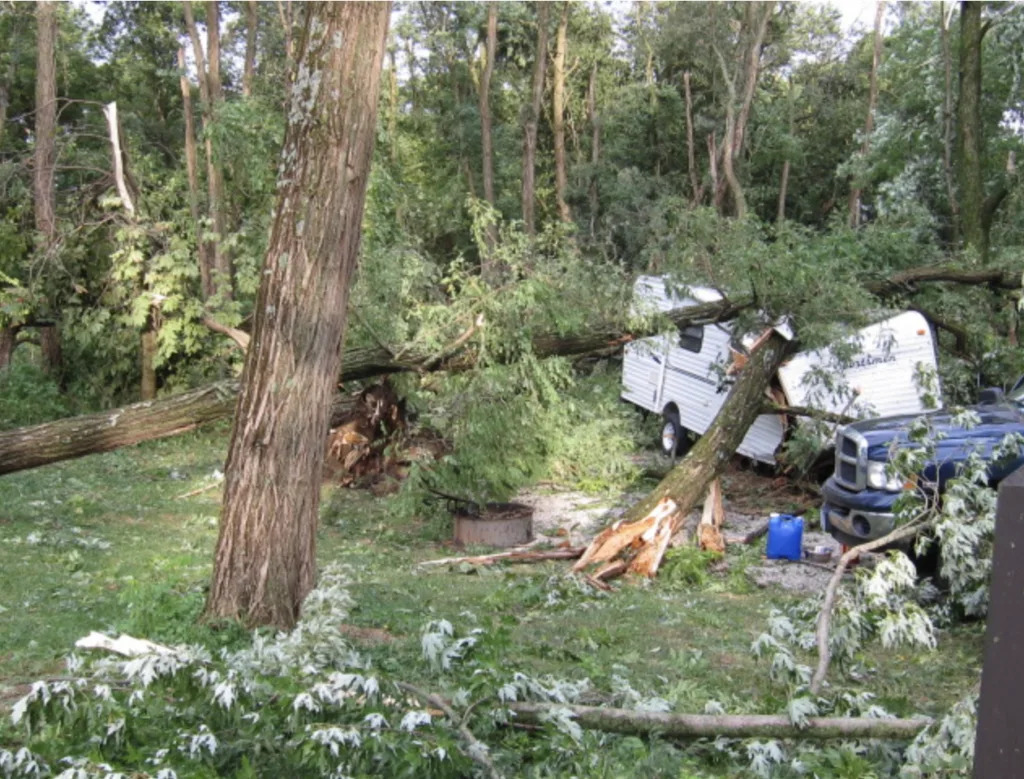
Tree damage at Lake Macbride State Park following the 2020 derecho. (Photo courtesy of Iowa Department of Natural Resources)
An estimated 2.67 million trees in Iowa forests and another 4.4 million trees in urban canopies were killed or damaged by the 2020 Midwest derecho that swept across Iowa, according to a new data tool from the Iowa Department of Natural Resources.
Twenty-seven Iowa counties were given a disaster declaration at the time because of destruction from the Aug. 10 derecho. The data tool shows how Iowa state parks, cities, forests and communities have recovered from the destruction over the past five years and how many of those damaged trees have been replanted.
A derecho is a long-lived, straight-line windstorm that damages wide swathes of land. The event in 2020 caused more than 770 miles of damage through Iowa, primarily in central and east-central parts of the state.
The storm, which also impacted portions of Illinois, Indiana and Missouri, was estimated to have cost the Midwest $11 billion, which the National Weather Service called the most expensive thunderstorm event in modern U.S. history.
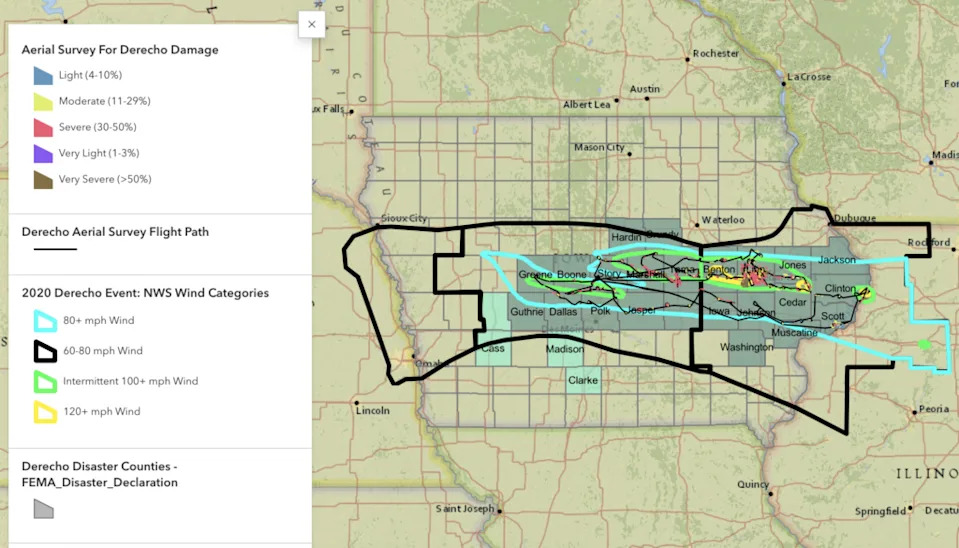
Impact on parks
According to DNR, the storms damaged trees on more than 56,800 acres of forest land in the state. These downed trees, and structures, caused power outages, closures and damage to campsites at state parks in the affected region.
The data tool gives a breakdown of the impact to each state park affected. Lake Macbride State Park, for example, was mostly closed and had limited recreation until Aug. 26, 2020, due to downed lines and a count of 314 trees that were damaged.
Rock Creek State Park had nearly 290 damaged trees and was partially closed during cleanup. Ledges State Park, located further west where the storm had slightly less powerful wind gusts, had more than 100 damaged trees.
SUBSCRIBE: GET THE MORNING HEADLINES DELIVERED TO YOUR INBOX
In total, according to DNR data, there were eight state parks impacted by the derecho. The other parks each had between 20 and 130 damaged trees that needed to be cut, cleared or pruned.
In several parks, forestry staff were able to develop salvage harvest and replanting plans. One such plan in Linn County resulted in enough salvaged timber for a sale of $57,400.
In addition to forest damage, about 850,000 acres of Iowa crops were damaged by the derecho.
Urban canopy loss
According to DNR, just under 13% of urban tree canopy was damaged by the derecho. Urban tree canopy is important for removing pollutants from the air, lowering air temperature, providing shade, which can help to lower energy costs, and sequestering carbon dioxide from the atmosphere, according to DNR.
A calculation of these benefits with the percentage of canopy loss represents an estimated loss of $20 million annually, according to the data.
But some regions were hit harder than others. According to the DNR data, Cedar Rapids lost 50-65% of its urban tree canopy, a total of around 670,000 trees that were lost.
This damaged Cedar Rapids’ pre-derecho plans to expand tree canopy from 24% to 30% in the region. Following the derecho, just 8% of Cedar Rapids had canopy cover, according to the DNR data.
The City of Cedar Rapids committed to an annual $1 million allocation, over the span of 10 years, to replace the lost trees. Public outreach indicated Cedar Rapids wanted the replanting to prioritize native trees through the program.
So far, the city has planted 16,500 trees on public property throughout the city, and another 7,000 trees were distributed for private property via the Iowa nonprofit Trees Forever.

Smaller cities like Marshalltown were also impacted by the loss of trees. DNR estimates Marshalltown’s cleanup of nearly 900 damaged trees cost about $4 million.
Through various partnerships, Marshalltown has been able to plant more than 700 trees in public areas and distribute hundreds of saplings to homeowners for residential plantings in the five years since the event.
According to DNR’s data, about 2,600 trees were lost in Marion because of the derecho. That accounted for 42% of Marion’s tree canopy.
Marion has since replanted 8,418 trees with funding from several partners including Trees Forever, Monarch Research, MidAmerican Energy and a fund from the state.
The DNR was allocated money from the state’s Rebuild Iowa Infrastructure Fund and since 2021 has used $250,000 annually to support community tree planting programs.
Grants up to $10,000 from the program were available for entities to plant trees on qualifying public lands within the 27-county region. The grants originally required a local match, but the requirement was dropped after the second year of the program.
Since 2021, communities have planted nearly 9,000 trees with the program. The Legislature did not allocate funding for the program this year, though DNR said the “need for recovery” has not stopped.
“Recovering from the significant loss of Iowa’s canopy is a long process,” the DNR data report said. “Five years later there is still a need to invest in revitalizing our urban and forest canopies.”

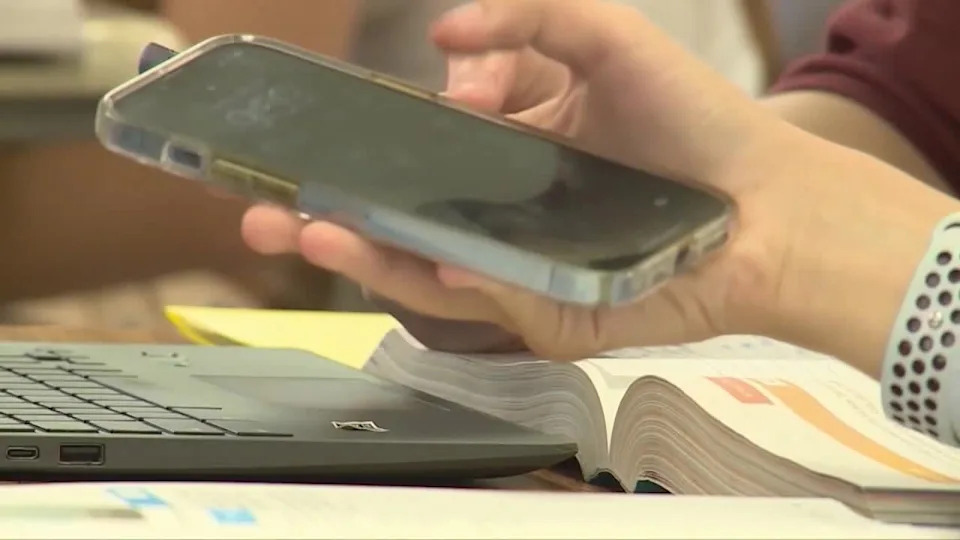

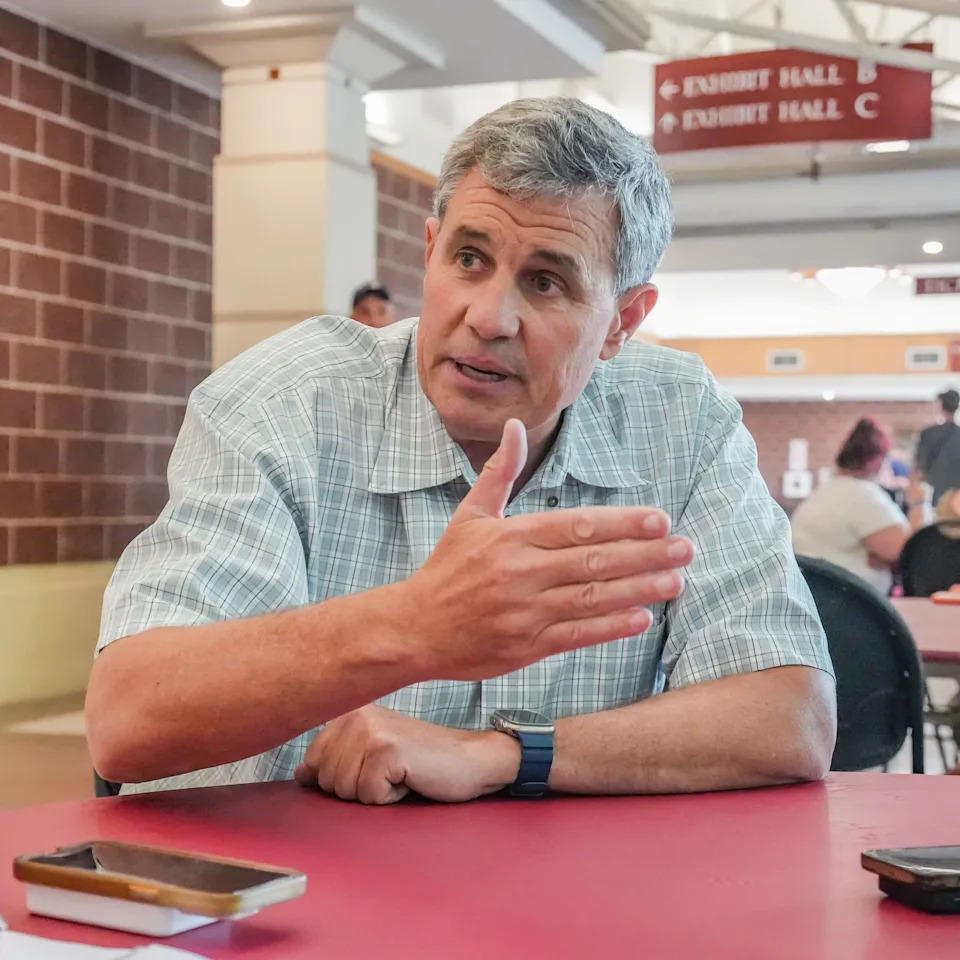

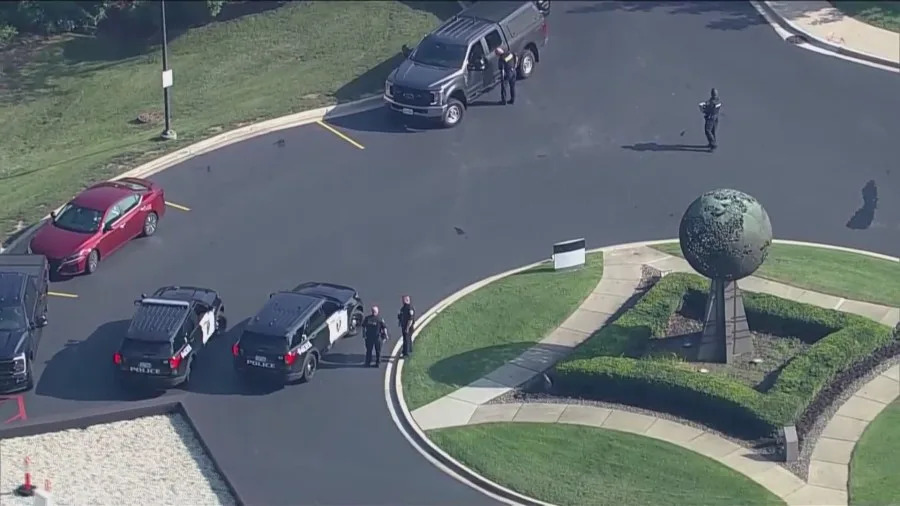


Comments